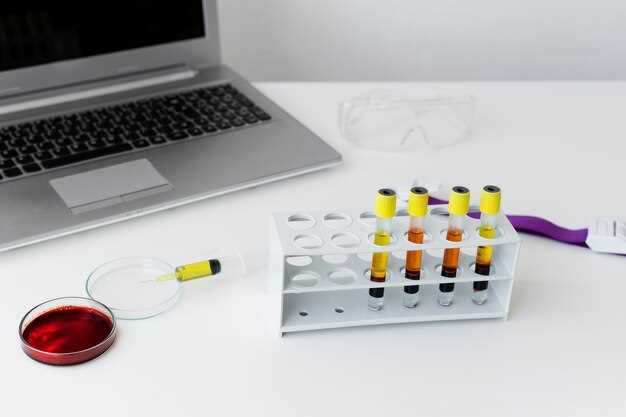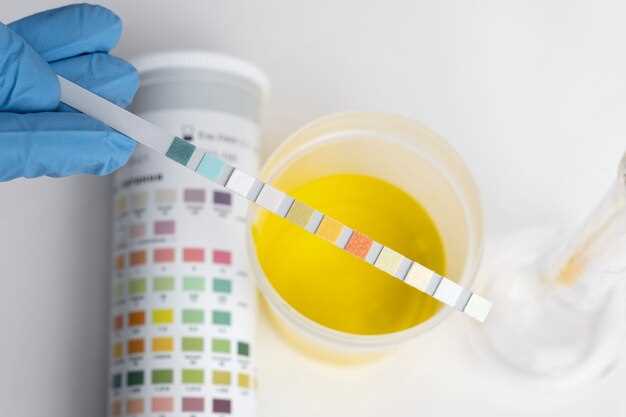
Discover the cutting-edge approach for simultaneous evaluation of two vital pharmaceutical components, fostering efficiency and precision in your healthcare regimen.
Explore the advanced methodology facilitating the concurrent assessment of these essential elements, revolutionizing the way you manage your health.
Understanding the Joint Determination
In this segment, we delve into the profound concept of concurrently evaluating two distinct entities within a singular analytical framework. Such an approach unveils intricate insights into the symbiotic relationship between pharmaceutical components, paving the path for enhanced comprehension and application.
| Insight | Advantages |
|---|---|
| Enhanced Precision | Augmented accuracy in assessing the interplay between components, fostering meticulous analysis. |
| Streamlined Workflow | Efficient utilization of resources through consolidated procedures, optimizing time and effort. |
| Comprehensive Understanding | A holistic view of the pharmacological interaction, elucidating nuances unattainable through separate assessments. |
Furthermore, embracing this methodology transcends conventional practices, ushering in a paradigm shift in pharmaceutical analysis. By acknowledging the synergistic effects and mutual influences, practitioners unlock new avenues of innovation and advancement in the field.
Benefits of Simultaneous Measurement
Exploring the advantages of simultaneously assessing multiple components in pharmaceutical analysis opens a gateway to enhanced efficiency and precision. This section delves into the myriad benefits this approach offers, providing a comprehensive understanding of its significance in modern analytical practices.
Enhanced Accuracy and Precision

- By amalgamating the measurement processes of diverse constituents, the methodology ensures heightened accuracy and precision in analysis.
- Eliminating the need for separate assessments streamlines the procedure, reducing the margin for error and enhancing overall reliability.
- This integrated approach minimizes variations and discrepancies, fostering a more consistent and dependable analytical outcome.
Optimized Resource Utilization
- Conducting simultaneous measurement optimizes resource utilization, conserving both time and materials.
- Through a unified methodology, laboratories can streamline their workflow, maximizing productivity without compromising on quality.
- Reduced consumption of reagents and equipment translates to cost savings, making simultaneous measurement a financially prudent choice.
Embracing simultaneous measurement not only revolutionizes pharmaceutical analysis but also exemplifies a commitment to efficiency, accuracy, and resource optimization.
Application in Pharmaceutical Analysis
In the realm of pharmaceutical scrutiny, the integration of critical components into a comprehensive analytical framework plays an indispensable role. This section delves into the pivotal aspect of dissecting key elements within pharmaceutical compositions, unraveling their intricate interplay, and discerning their individual contributions.
Unveiling Vital Components
Central to the scrutiny of pharmaceutical formulations lie the constituent components that constitute their essence. This segment elucidates the fundamental constituents underlying the intricate tapestry of pharmaceutical formulations, shedding light on their distinctive attributes and synergistic effects.
Deciphering Complex Formulations
Within the realm of pharmaceutical analysis, unraveling the complexity inherent in formulations stands as a cornerstone. This section navigates through the labyrinthine structure of pharmaceutical compositions, elucidating the methodologies employed to decipher their intricate composition and unravel the underlying principles governing their functionality.
Key Components: Diclofenac and Omeprazole
In this section, we delve into the fundamental elements that constitute the essence of our subject matter. Our focus centers around two pivotal components that play a crucial role in pharmaceutical analysis, each contributing its unique properties and effects. Through a comprehensive exploration, we aim to illuminate the distinct characteristics and significance of these constituents.
- Properties of the First Component
- Origins and Development
- Therapeutic Functions
The first component under scrutiny embodies a spectrum of properties that underscore its pharmaceutical relevance. From its inception to its current form, a journey of evolution characterizes its role within the realm of medicinal science. Its therapeutic functions span a diverse array of applications, offering multifaceted benefits across various medical contexts.
- Characteristics of the Second Component
- Historical Context
- Clinical Applications
Equally paramount is the second component, distinguished by its unique set of characteristics and historical trajectory. Embedded within its narrative lies a rich tapestry of clinical applications, reflecting its indispensable role in addressing a myriad of health concerns.
Methodology of Joint Assessment

In this segment, we delve into the procedural intricacies behind the joint evaluation process for these two pharmacological entities. It encompasses the systematic approach towards discerning the presence and quantities of the aforementioned components within a given sample. The methodology encapsulates a meticulous series of steps aimed at achieving precise and reliable outcomes, vital for pharmaceutical analysis.
Let’s break down the methodology into comprehensible stages:
- Sample Preparation: The initial phase involves meticulous preparation of the sample, ensuring its homogeneity and suitability for analysis.
- Instrumentation Selection: Next, the appropriate instrumentation is carefully chosen, considering factors such as sensitivity, accuracy, and specificity.
- Analytical Technique: Various analytical techniques are employed, each tailored to suit the specific characteristics and requirements of the compounds under scrutiny.
- Calibration Standards: Calibration standards are utilized to establish a reliable correlation between the measured responses and the concentrations of the target compounds.
- Method Validation: Rigorous validation of the analytical method is conducted to ascertain its robustness, precision, and accuracy.
- Quantitative Analysis: The quantitative analysis phase involves the application of mathematical algorithms to determine the concentrations of diclofenac and omeprazole within the sample.
- Data Interpretation: Finally, the acquired data is meticulously interpreted, considering factors such as peak resolution, signal-to-noise ratio, and chromatographic purity.
This methodology underscores the meticulousness and precision requisite in the simultaneous estimation of pharmacological agents, ensuring the reliability and validity of analytical results in pharmaceutical analysis.

